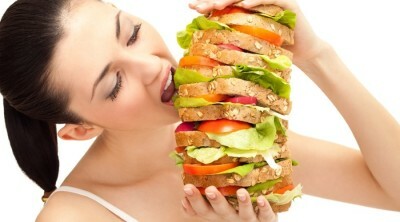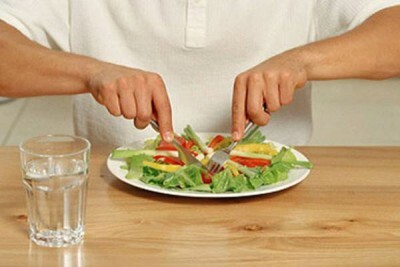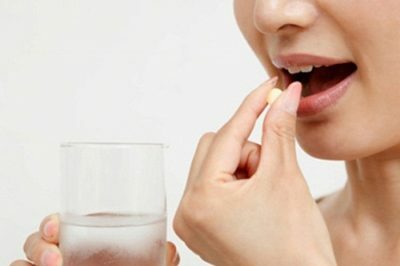1 Composition of daily ration
- Quantity of proteins and fats - 100 - 115 g.
- Amount of carbohydrates - 400 - 450 g.
- Liquid - 1,5 l.
The total amount of calories is 3000 kcal.

Recommended to read
- Preparations for stomach and duodenal ulcers
- Antibiotics for duodenal ulcer
- Do you need a diet before ultrasound
- Effective remedy for gastritis and stomach ulcer
Nutrition with duodenal ulcer has its own characteristics. When drawing up the menu, one should start from the general state of the patient at the moment. With a sharp exacerbation, a diet is prescribed for ulcer of the stomach and duodenum No. 1a, approved by the Ministry of Health. After removing the main symptoms of the disease( in the second week), you can go to the diet number 1b, the approximate menu of which will be given below. At the end of treatment in the first few months, a diet for stomach and duodenal ulcer No. 1 is prescribed, which is less strict than the first two, but is aimed at maintaining normal gastric secretion and complete restoration of body functions.
However, there are general principles for processing products that must be observed at any stage of the disease.
2 Requirements for processing and food intake
- The menu structure should maintain the exact ratio of proteins, fats and carbohydrates in the form that is provided for a particular type( number) of the diet.
- All food should be taken in a warm form. Hot food will once again irritate the mucous membrane, which is already so traumatized. A cold in its properties is digested faster, not having time to give all the necessary nutrients. Therefore, the correct thermal regime will help avoid unnecessary discomfort and make the treatment more effective.
- Products with ulcers should not be coarse, with a hard skin. It is worth to give up fiber-rich fruit and berries. In order not to cause more inflammation and additional pain, they must be excluded( radish, beans, apples, cabbage, cucumbers, tomatoes, peppers).
- Eat better often( every 3 hours) and in small portions. Under such conditions, the stomach will not remain empty for long, and hydrochloric acid will help to digest food, and not eat away the walls of an empty stomach. In addition, small portions will not stretch the stomach and get rid of overeating, and therefore from the feeling of heaviness.
-
 IMPORTANT TO KNOW! Gastritis? Ulcer? To have a stomach ulcer not turned into cancer, drink a glass. ..Read the article & gt; & gt;
IMPORTANT TO KNOW! Gastritis? Ulcer? To have a stomach ulcer not turned into cancer, drink a glass. ..Read the article & gt; & gt;

Diet in duodenal ulcer has a number of limitations, on which adherence to treatment depends.
3 Strictly prohibited
- Fried and greasy meals.
- Products cooked by smoking( sausages, meat, fish).Pickles, marinades.
- Fresh soft bread and sweet pastries.
- Canned food, cheeses( in any form).Groats of barley, pearl barley, corn, millet, beans.
- Dairy products that increase acidity.
- Fresh vegetables and fruits.
- Carbonated juices, lemonade, alcohol, coffee, kvass.
Prohibited products of this list strongly irritate and stimulate increased secretion of gastric secretion, which in turn will only delay the healing process. What can you eat with duodenal ulcer? The menu of the sparing diet should include products that reduce the production of gastric juice, neutralize hydrochloric acid, relieve dyspeptic disorders( belching, heartburn, nausea) and can quickly digest without overloading the stomach.
Permitted:
- White wheat bread( yesterday or dried), unsweetened dry biscuit.
- Soups with milk, vegetable mashed soups with pureed cereals( hercules, buckwheat, rice, etc.).
- Boiled meat of low-fat varieties( veal, beef, rabbit), steam cutlets, meatballs, knots, crochets.
- Postal fish varieties in the form of cutlets, boiled or steamed.
- Milk, curdled milk, fermented baked milk, fresh non-acidic cottage cheese.
- Eggs( not more than 2 pcs per day) soft-boiled or steam omelet.
- Groats: semolina, oatmeal, buckwheat, rice. Porridges are semi-viscous, boiled on milk or water.
- Potatoes, carrots, beets, pumpkin, zucchini, cooked in water or steamed, and mashed in the form of puree, souffle, pudding.
- Berries and fruits in grated, cooked or baked form. Compotes, jelly, mashed potatoes, mousse. Honey, non-acidic preserves, pastilles.
- Non-basic tea( with milk, cream), weak cocoa. Sweet juices from fruits and berries, broth of a dogrose.
-
 Gastroenterologist VAZHENOV: "I beg you, if you started to worry about abdominal pain, heartburn, nausea, do not do gas. .."Read more & gt; & gt;
Gastroenterologist VAZHENOV: "I beg you, if you started to worry about abdominal pain, heartburn, nausea, do not do gas. .."Read more & gt; & gt;
It should be considered in more detail what can be eaten with an ulcer in a sharp exacerbation stage. In such cases, there is a need for a bed rest and the use of diet No. 1a, which lasts from 5 to 7 days. The menu of this diet is designed in such a way that it minimizes chemical, mechanical and temperature irritation to the lesions and accelerates the process of repairing the damaged mucous membrane. Diet for peptic ulcer in the acute phase is the easiest.
ADVICE FROM THE MAIN GASTROENTEROLOGIST
Korotov SV: "I can recommend only one remedy for the rapid treatment of Ulcer and Gastritis, which is now recommended by the Ministry of Health. .." Read testimonials & gt; & gt;

4 Therapeutic diet menu №1а
- First breakfast: semolina porridge, soft-boiled egg, milk( 1 glass).
- Second breakfast: fruit jelly, fresh non-fat cottage cheese.
- Lunch: soup rice semi-viscous, meat soufflé, compote of dried fruits.
- Snack: scrambled eggs, milk( 1 glass).
- Dinner: porridge buckwheat milk liquid, broth of wild rose.
- Overnight: Milk jelly( made from pumpkin or carrot).
At the second stage of treatment, with the preservation of bed or half-bed regimen, they switch to the therapeutic diet No. 1b, which on average varies from 10 to 20 days. Such nutrition with ulcer of the stomach and duodenum is applicable in the period of blurred exacerbation of the disease or in chronic gastritis. Gradually increases the caloric content of the diet, bread is introduced( dried or in the form of crackers), and mashed porridge is replaced by mashed soups, meat steamed meatballs and meatballs. The fractional and temperature method of food intake remains unchanged.

5 Diet №1b
- The first breakfast: a porridge on milk, tea with milk, bread( yesterday's).
- Second breakfast: curd mousse, dried biscuits, milk( 1 glass).
- Lunch: vegetable vegetable soup, steam chicken little bits, mashed potatoes, compote.
- Snack: milk soufflé, crackers.
- Dinner: vegetable mashed potatoes, fish souffle, tea.
- Overnight: milk( 1 glass).
WE RECOMMEND!
For prevention and treatment of gastrointestinal tract diseases our readers advise Monastic tea. This unique remedy consists of 9 medicinal herbs useful for digestion, which not only complement, but also enhance each other's actions. Monastic tea will not only eliminate all symptoms of the gastrointestinal tract and digestive system, but will also permanently eliminate the cause of its occurrence.
The opinion of doctors. .. "
During the period of scarring and remission, as well as with chronic gastritis with normal and high acidity, diet No. 1 is applied. It is aimed at accelerating the processes of regeneration of the mucous membranes and restoring the secretory function of the stomach. Nutrition for stomach and duodenal ulcer at this stage should remain moderate, gentle, full and fortified. Preparation of dishes is allowed in a grated form, boiled and steamed. Diet in the duodenal ulcer keeps the same prohibitions on products that are provided for the two previous ones. Products containing a large amount of fiber, vegetables and fruits with a hard skin, bread coarse - all this is prohibited. Preference is given to viscous, semi-liquid soups, cereals, puree with low salt content.

6 Menu diet № 1
- First breakfast: soft-boiled egg, vermicelli boiled with butter, tea with milk.
- Second breakfast: apple baked, jelly.
- Lunch: potato soup, boiled veal, cooked beetroot beet, cherry compote.
- Snack: curd pudding, pumpkin juice, biscuits.
- Dinner: boiled fish, buckwheat semi-liquid porridge, tea.
- At night: a glass of milk.
Thus, the main task of therapeutic diet therapy is to alleviate the symptoms of the disease, restore impaired functions and prevent the return or complications of the disease.
Undoubtedly, the best results can be achieved through comprehensive treatment. However, those patients who faithfully followed all the recommendations and limitations of such nutrition, recovered faster and had fewer relapses. With a chronic disease of the duodenum, a diet with such a diet will become a faithful assistant in the fight against the disease.
Do not forget that in any treatment of great importance is the emotional mood. Depression, psychological stress, stress - all these factors are harmful to the human body and delay the process of recovery. Strong good sleep, a healthy lifestyle and a great mood can halve the treatment time and make its process more productive and enjoyable.
- 1 Composition of the daily ration
- 2 Requirements for handling and food intake
- 3 Strictly prohibited
- 4 Therapeutic diet menu №1a
- 5 Diet №1b
- 6 The diet menu №1
Duodenal ulcer is a chronic gastrointestinal disease with a deep lesion of its mucous membrane. Diet with duodenal ulcer is a special diet designed to relieve inflammation, eliminate unpleasant symptoms, as well as faster healing and restoration of damaged areas. Therefore, the complex treatment of this ailment includes not only medical therapy, but also therapeutic nutrition, which isa pledge of a successful recovery.
Do you have gastritis?
GALINA SAVINA: "How easy is it to cure gastritis at home for 1 month. A proven method - write down a recipe. ..!"Read more & gt; & gt;
Daily set of products should be balanced and full, enriched with vitamins and trace elements.



